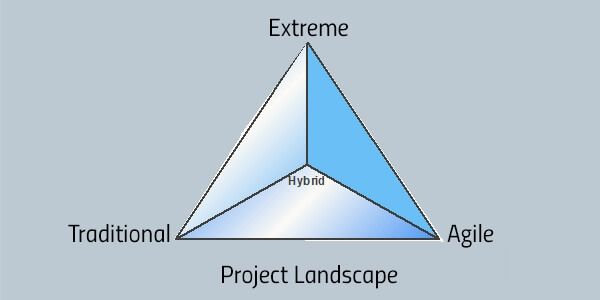Who is Who: The Importance of an Org Structure when Delivering Projects
When starting a new job or project, it is very important as a Project Manager or Business Analyst to have a good idea of how an organization or business operates.
This helps navigate the internal & external ways of the business, and understand how it affects the customer base. I currently work in the hospital healthcare industry, which acquires several hospitals each year. The more companies that the business acquires, there is a high chance that there will be more growth, responsibility, & opportunities (including problems), but the business can easily become chaotic if not properly structured. On my first day of the job, I did the typical project manager request by asking for an organization structure. Unfortunately, my request was rejected because employees either left, were laid off, promoted, or moved to different departments due to another recent acquisition purchase. As a result, I did not know who to go to for information or to execute certain tasks. Org charts are vital for the following reasons:
- It helps Project Managers & Business Analysts understand the different functions throughout the business, the team, and team members.
- It is very important to understand who needs to be involved or the appropriate audience when it comes to sharing information for projects or initiatives.
- There is always room for improvement.
If organization structures were more emphasized, there would be much more efficiency, productivity, and less stress & chaos for employees throughout the business.
Knowing Your Industry & Business
Knowing your industry and business are super-beneficial in so many ways.
- It helps boost productivity & performance. By understanding the organization and its structure, the Project Manager and Business Analyst will know exactly who to go to for tasks and get stuff done, instead of going around in circles. It is all about delivering & proving the return of investment (ROI) based what you delivered.
- It allows you to network outside your team and gain relationships. You probably hear this often, but your network is your net worth (internally [within your team and organization] & externally [the industry & working with vendors]). In a perfect world, everyone has a role and numerous responsibilities, and they are obligated to make sure they uphold their responsibility no matter what. But in the real world, that is not always the case. If a team member on a project does not know you well enough, there is a chance that he or she will be less motivated or enthusiastic to work with you, or even go above and beyond the call of duty to get last-minute extra tasks done for the project. It is also important for the organization to know who you are. You are a great professional, but now it is time for everyone else to know that you are great! Your reputation is everything. If no one knows who you are besides your team, what reputation do you really have?
- Exposure is key to taking advantage of new opportunities and gaining new insights of what is going on in the organization. If you constantly perform to your greatest height, and continue to have a great reputation across the organization, people will come to you for input & new opportunities. Being a Project Manager or Business Analyst is a wonderful role with great rewards, but always allow yourself to grow when the opportunity knocks. As human beings, we must challenge ourselves often in order to grow and not become stagnant. As you accomplish a major challenge, another will come and that is how you improve physically, mentally, and spiritually. Always aim higher and be better! In addition, if there is a change in operations or process for a department and you have a good working relationship, there’s a high chance that information will be communicated to you, which you can communicate to your team. Yes, spread the word! From a team perspective, you are trustworthy and reliable when it comes to your say-do ratio and knowledge of information.
[widget id=”custom_html-68″]
Putting the Pieces Together
During the initiation stage of a project after getting the project charter approved, it is the job of the Project Manager and/or Business Analyst to identify the stakeholders, and determine their expectations, influence, & impact of the project. In order to know the major and minor stakeholders, you must understand the structure, culture, existing systems, and project management processes of the company. Below are a few pointers when it comes to identifying the right stakeholders:
- Understand the problem that needs to be solved. This is very important because it provides an opportunity to understand the current state and the people who are involved in the current process that needs to change. By understanding the current state & pain points, you automatically get buy-in from the end-users, and it is perceived as if you are intrigued and determined to be solving the problem. Believe it or not, this will be in your favor as the project continues. After determining the people involved in the current process, they should be listed in the stakeholder register and evaluated based on their impact & influence of the project. Most importantly, they must be kept in the loop of what’s going on throughout the project no matter if it is a weekly or monthly project status update &/ or meeting.
- Ask your business sponsor and/or champion. Most of the time, the business sponsor/champion will let you know the details of the problem &/ or project that no one else will know or share, including the stakeholders who need to be involved. As you list these different stakeholders, try to understand their current role & responsibilities, and how they fit into the current business problem(s) that need to be resolved. By doing so, it will show their value & impact to the project. A “good” business sponsor/champion will be your best ally when it comes to the project, because they will provide as much support as possible to solve the problem because of the value added to the business.
BUILD A RELATIONSHIP WITH YOUR SPONSOR/CHAMPION! I cannot emphasize this enough. In order to build a relationship, you must gain trust. In order to gain trust, having a 100% say-do ratio is necessary. Always deliver what you say you are going to do, and then they will like you. Also, treat your champion how you want to be treated. Key words to apply are truth, respect, enthusiasm, reliability, inclusion, & help. - After gathering your initial list of stakeholders, sit down with your manager and review the list to get feedback. This is very important to fill any gaps. Your manager is in that position for a reason, so use them for your benefit. If you are successful, your manager is successful. It is a win-win situation!
There are ALWAYS Opportunities for Improvement
Two of the greatest traits that a Project Manager or Business Analyst should have is being inquisitive & innovative by looking at how things are currently done and can be improved. As you get a better understanding of the organization, and the roles & responsibilities of all teams and their team members, ask questions. Why is the person doing this task? Why is the person doing the task this way? Is there an easier way to get the same output? As Project Managers & Business Analysts, it is our sole responsibility to create value, efficiency, and productivity throughout the entire organization. This might not be easy to get the top people (executives, senior management) on your side, but this is where your influencing skills apply.
Although eliminating waste and creating value should be coming from the top-down, that is not always the case. There are times where you must step up and be a change leader. Yes, you will have to open your mouth & communicate this to senior management, but you can back it up with facts, pain points that affect productivity, the potential solutions, and quantitative benefits (dollar amounts is highly suggested) when the pain points are resolved by one or more a combination of the solutions. By including these factors to your story while presenting the opportunity, you can make a difference & also shift the company culture to innovating constant improvement. So, let’s put on our capes and become change leaders!
Sum It Up
Organization structure is necessary in order to complete projects successfully. According to Rita Mulchay’s PMP Exam Prep Eighth Edition, the Project Manager must “determine company culture and existing systems”. Existing systems include an org chart where you must understand the roles and responsibilities for every team and team member. For business analysts, in order to conduct a successful strategy analysis, they must have the organization chart as part of understanding the current state. If there is no order, there is chaos; and this applies to projects or initiatives, which create tons of value.






 Figure 2: The OST Model
Figure 2: The OST Model